SEMIGRATION DIARIES
Preserve and restore an old Karoo house
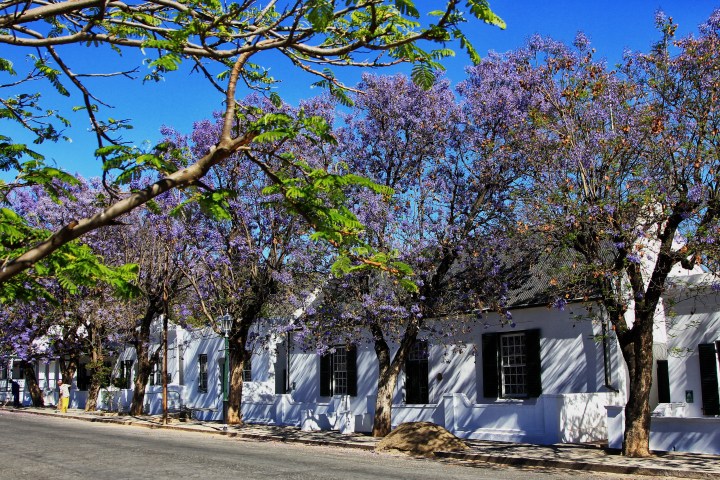
There are few more heartening sights in a dorp than a properly restored and lovingly maintained old home or a new one that is in harmony with its surroundings.
By the same token, there are few more jarring and depressing sights than a nouveau Tuscan mansion in an inappropriate situation, or a classic beauty altered and modernised to ugliness.
In South Africa, any buildings older than 60 years and the fixtures are protected by the National Heritage Resources Act. They may not be demolished and their character, especially the facades, cannot be radically altered. Treating heritage buildings with respect can increase not only their value but that of the town. As the late Martin Rattray, an old friend and brilliant architectural designer who lived down in The Crags near Plettenberg Bay, would say:
“Charm is marketable. Charm is valuable. I will send Horst the Rottweiler after any person who holds charm subservient to low maintenance.”
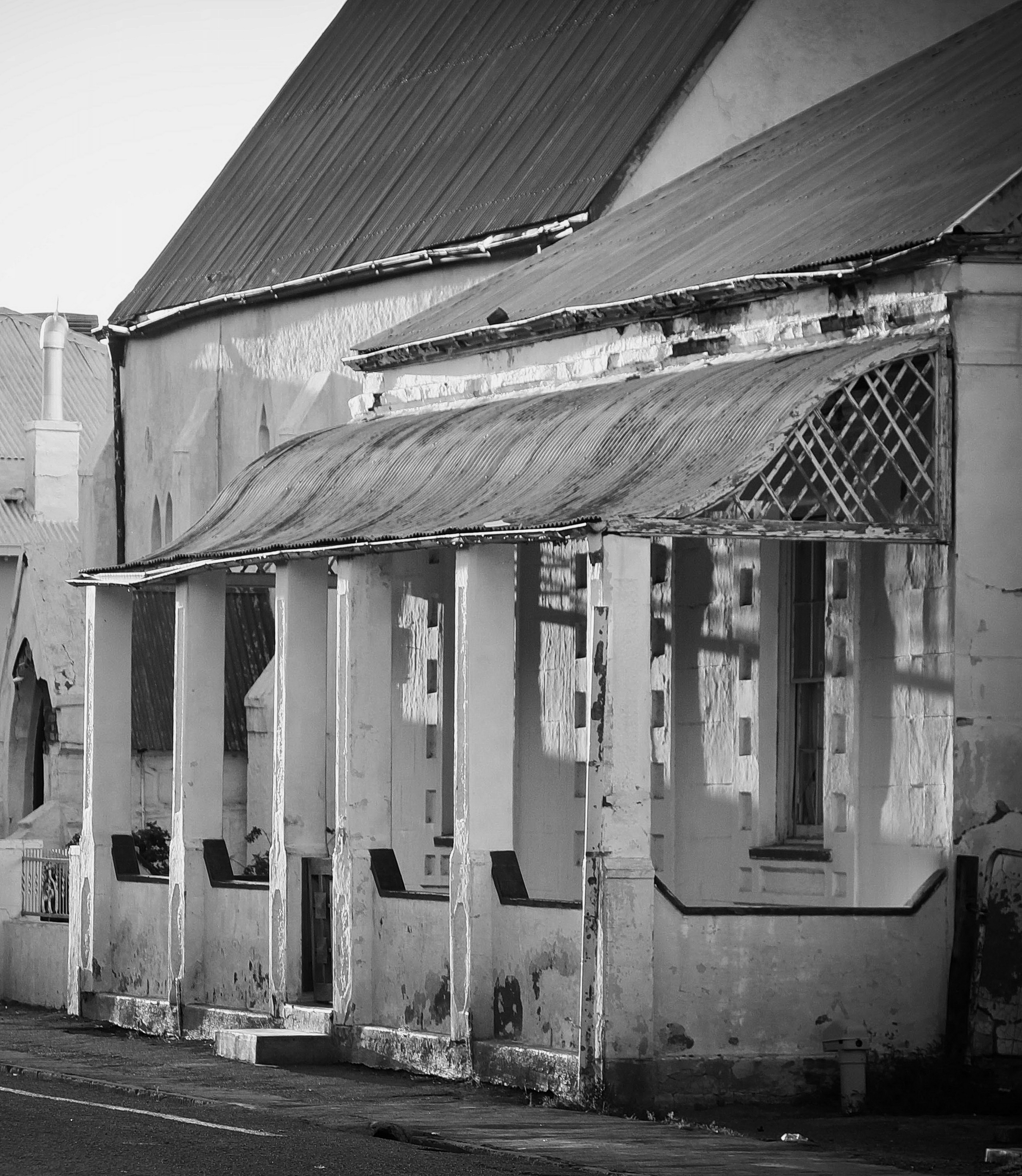
A fixer-upper in Victoria West, just waiting for renewal. (Photo: Chris Marais)
Secrets and common sense
If you have become the custodian of an old house, it helps to understand why things were built as they were. Often the reasons were intensely practical.
Thick walls not only strengthen buildings but also give them thermal efficiency, absorbing and slowly releasing the heat of the sun. Stoeps cool down hot breezes before they enter the house.
Peach pips strengthen clay floors in high-traffic areas like kitchens. Attic doors can be opened or closed to trap or release heat. Internal doors enable the partitioning off of areas inside the house so that they can be easily and effectively heated in winter. High ceilings moderate the summer swelter. Shutters block out heat and light and provide security. In addition, their narrow slats also compress and lower the air temperature flowing through open windows.
Kitchens face south for maximum coolness to preserve food. Living rooms look north for warmth.
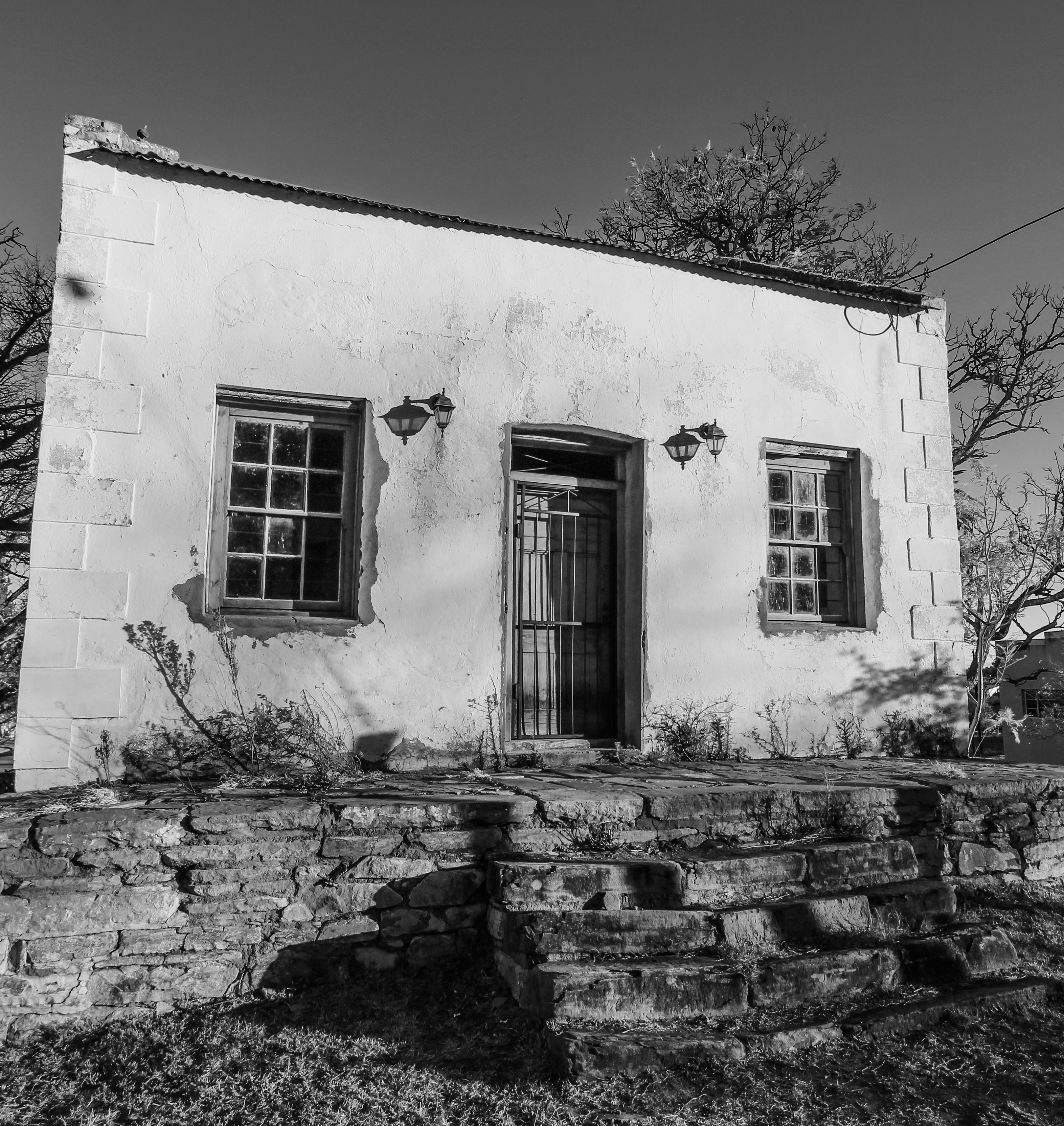
This little building in Somerset East could be turned into ‘small house magic’ by an enterprising downsizer. (Photo: Chris Marais)
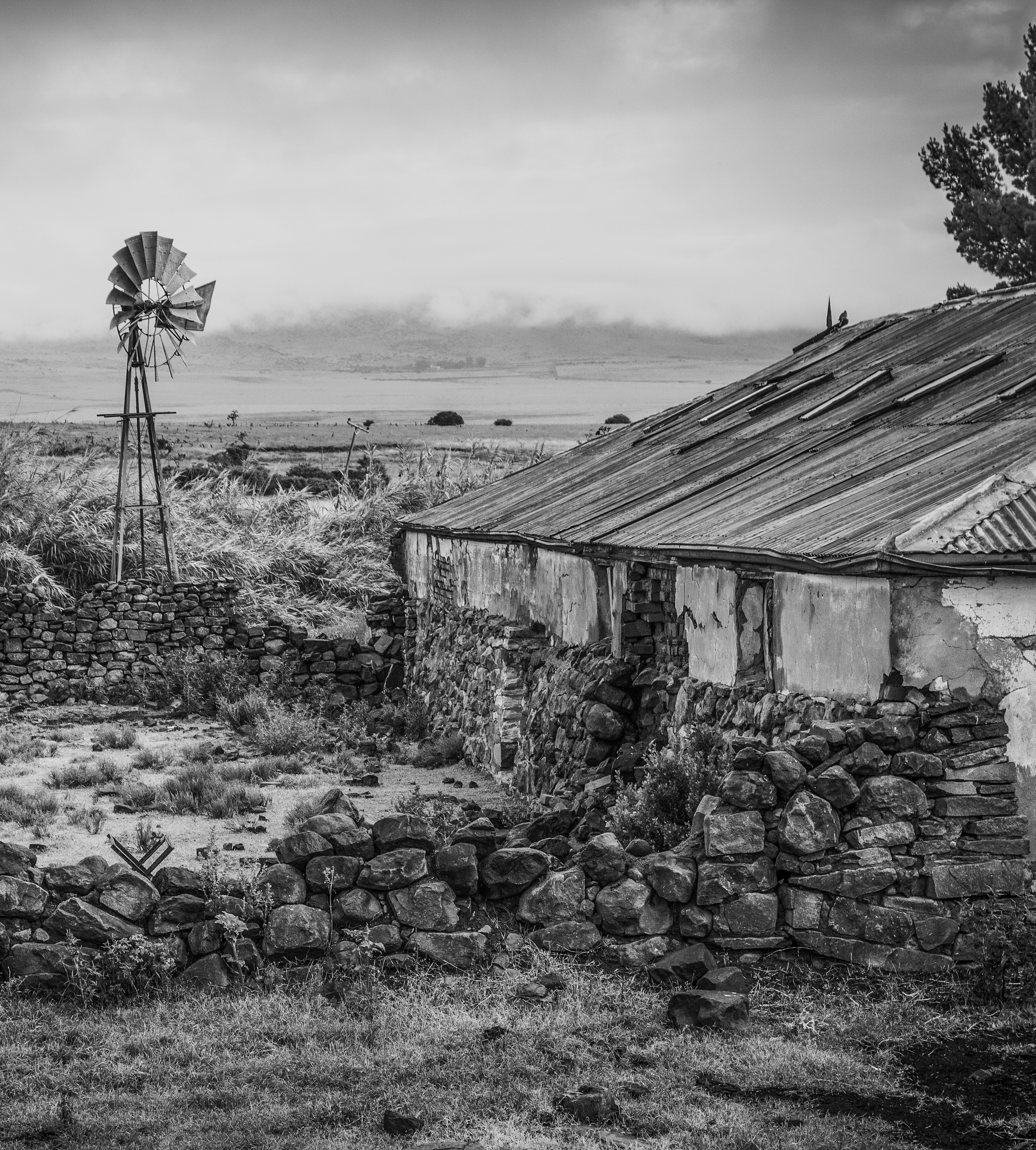
Some of the old farm buildings of the Karoo can still be rescued – others are way past it. (Photo: Chris Marais)
Houses built more than 100 years ago from seemingly ephemeral materials like mud, reeds and wood often outlast modern structures. They can breathe and flex like living beings thanks to sun-baked bricks and mud plaster, surviving scorching summers and freezing winters.
Handcrafted buildings
The classic builders often used the Golden Mean – the mystical ratio of 1 to 1.618, which has always been very pleasing to the human eye. It occurs again and again in nature and is repeated in nautilus shells, the arrangement of petals in flowers, spiral galaxies, and tree branches.
Photographers call it the Golden Ratio, and using it in composition gives the image harmony and balance.
The magic of the Golden Mean was something Port Elizabeth-based (now Gqeberha) architect, artist and professional heritage consultant Theresa Hardman also admired when she was doing her master’s thesis on the conservation of Karoo farmhouses. Consolidation of farms and severe, prolonged drought meant many beauties stood empty in the Eastern Cape. Farmers would sometimes use them for storing lucerne. Sheep would sleep in them.
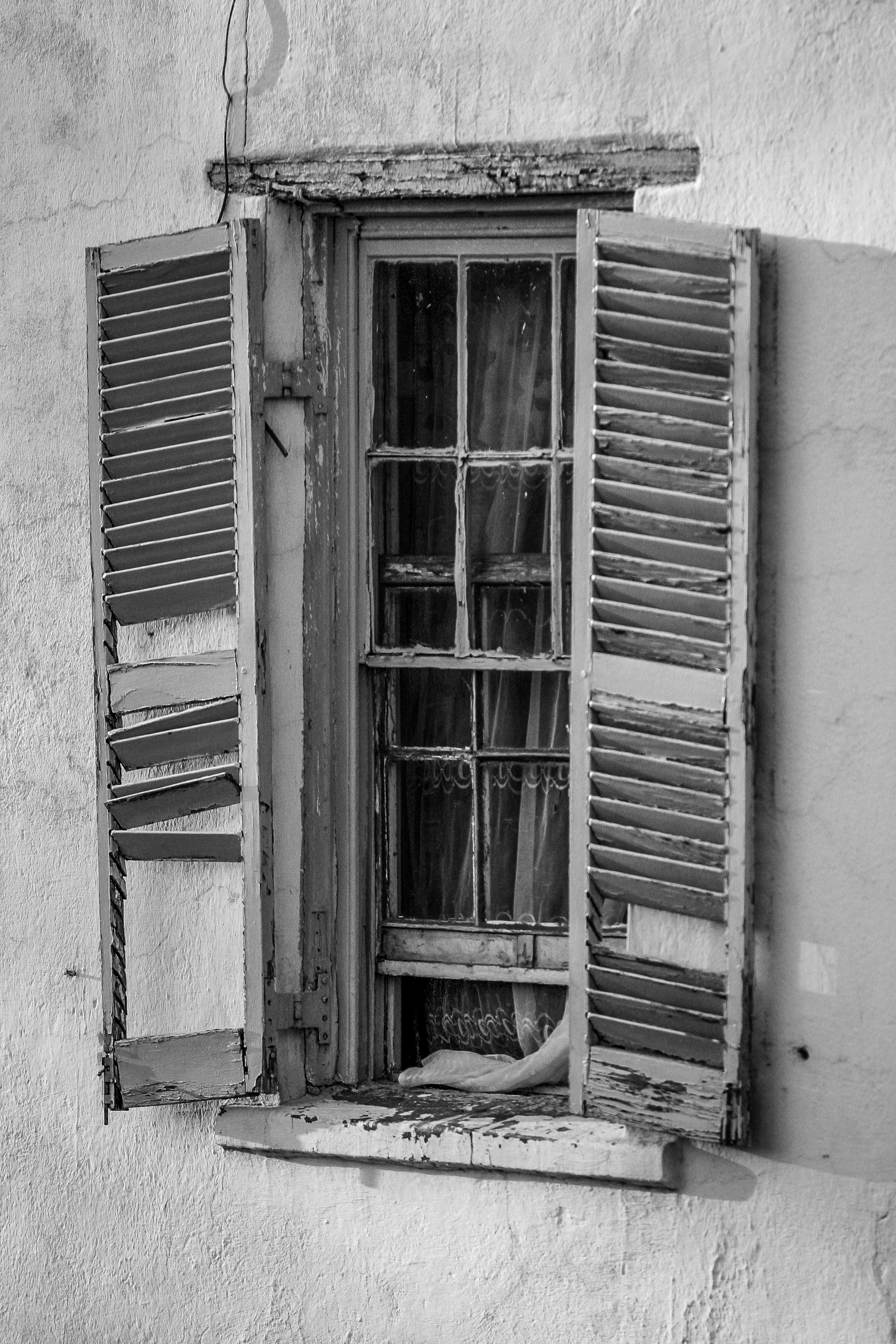
A set of ancient window shutters awaits the restorer’s touch. (Photo: Chris Marais)
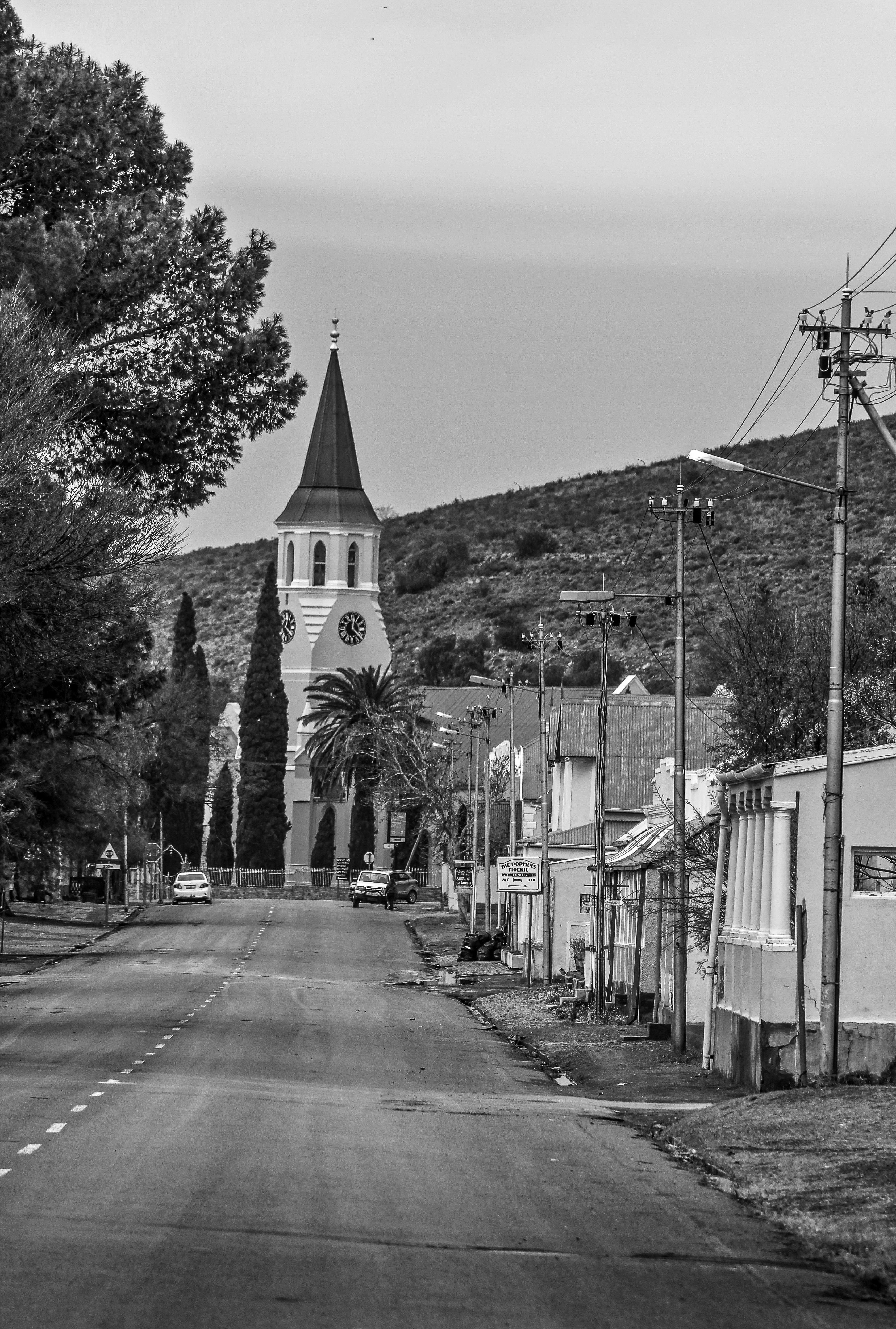
The main road of Victoria West, Northern Cape. Preserving architectural heritage attracts investment into small towns. (Photo: Chris Marais)
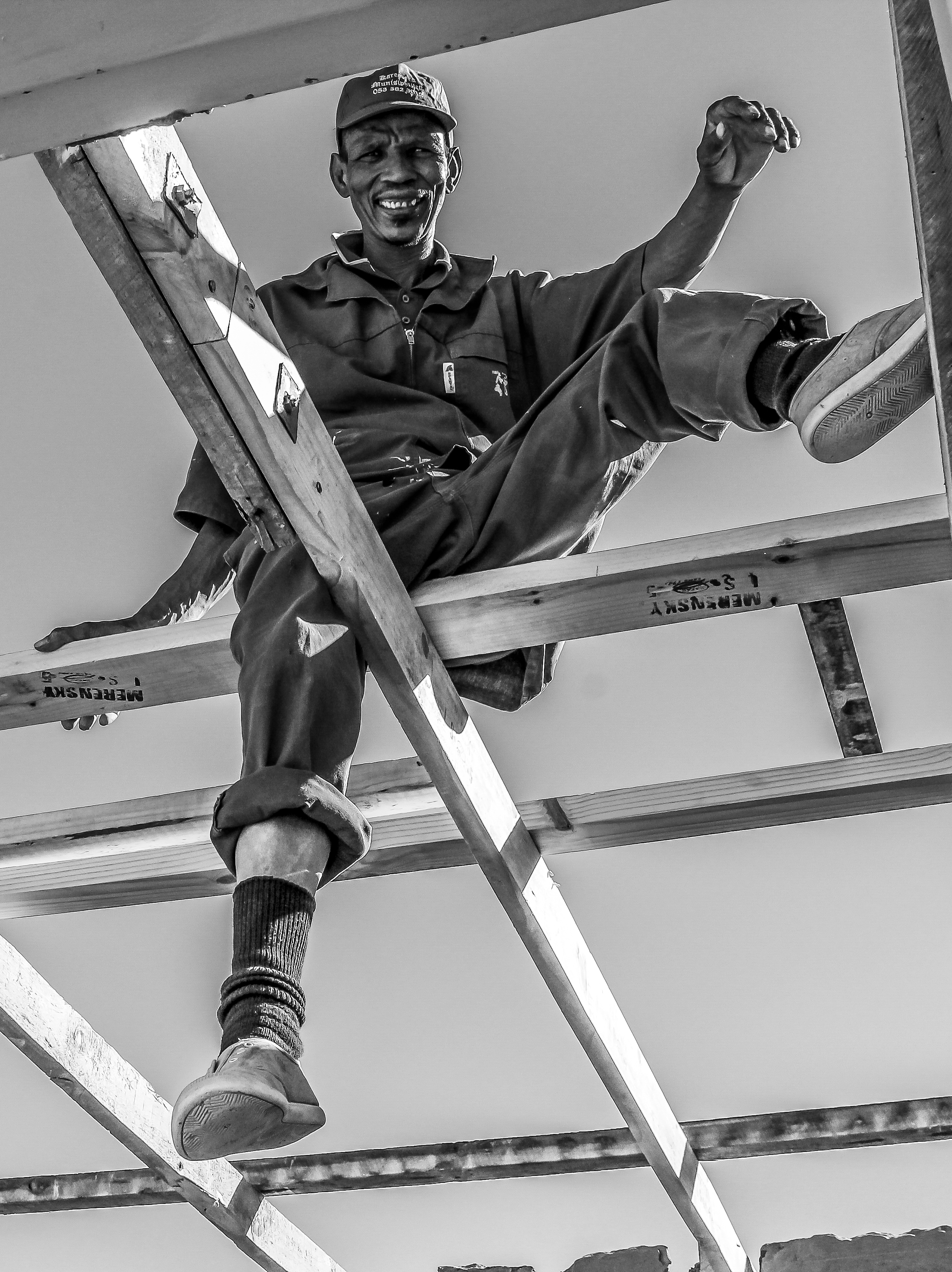
Jaco Pretorius, top construction man from Vosburg, Northern Cape. (Photo: Chris Marais)
“These are handcrafted buildings, yet thermally efficient. They have simplicity, an elegance of proportion, a sense of space and internal volume from high ceilings.
“In my opinion, one of the worst mistakes new owners can make is to change the proportions of the original openings – using big sliding doors, for example, or unbalancing the building by adding on thoughtlessly. Cutting the house off from the road with high walls or palisades means you might as well be living back in suburbia!
“The stoep is one of the most important parts of the Platteland house. It’s not just an afdak. It functions as a broad-rimmed sun hat in the summer, by keeping the direct sunlight out of the eyes of the house. But, more importantly, it’s an outdoor living space for watching the comings and goings of the town, for experiencing Karoo thunderstorms first-hand, or for seeing the sun rise and set with the appropriate drink in hand. It should therefore never be enclosed. It’s a social space, the interface between you and your new community.”
One of the recommendations she made in her thesis was to encourage agri-tourism to some of these beautiful farmhouses.
“Houses need human energy and life, or they just collapse. The thesis was written in the early 1990s, at the height of sanctions against tourism in our country, and everyone thought I was mad. But now people are restoring Karoo houses. They are waking up to their cultural, lifestyle and financial value and this makes me happy.”
And the garden
It’s also good not to immediately rip out the established garden and start afresh. You may find old-fashioned treasures like quince hedges, berry bushes, grapevines, scrambling wisteria and fruit trees along with irises, hollyhocks and even heritage roses.
Join a gardening club, listen to local advice and wait a year to see how the sun touches the plants, whether the fruit trees are healthy, how severe the frosts are, what kind of soils you are dealing with and how brackish the water is.
In the countryside there are few plant nurseries, so gardens are not constantly being ripped out and redone as fads change. What thrives is kept, and that is why Cape Town horticulturist Gwen Fagan made such exciting discoveries in the Eastern Cape when she set off in search of heritage roses in South Africa. She tells the story in her book Roses at the Cape of Good Hope, first published in 1988 and now a classic.
Gwen found 60% of South Africa’s remaining old roses in the Eastern Cape Midlands, the thickly petalled, cabbagy beauties still growing in and around Graaff-Reinet, Bedford, Cradock, Somerset East, Hogsback and Grahamstown.
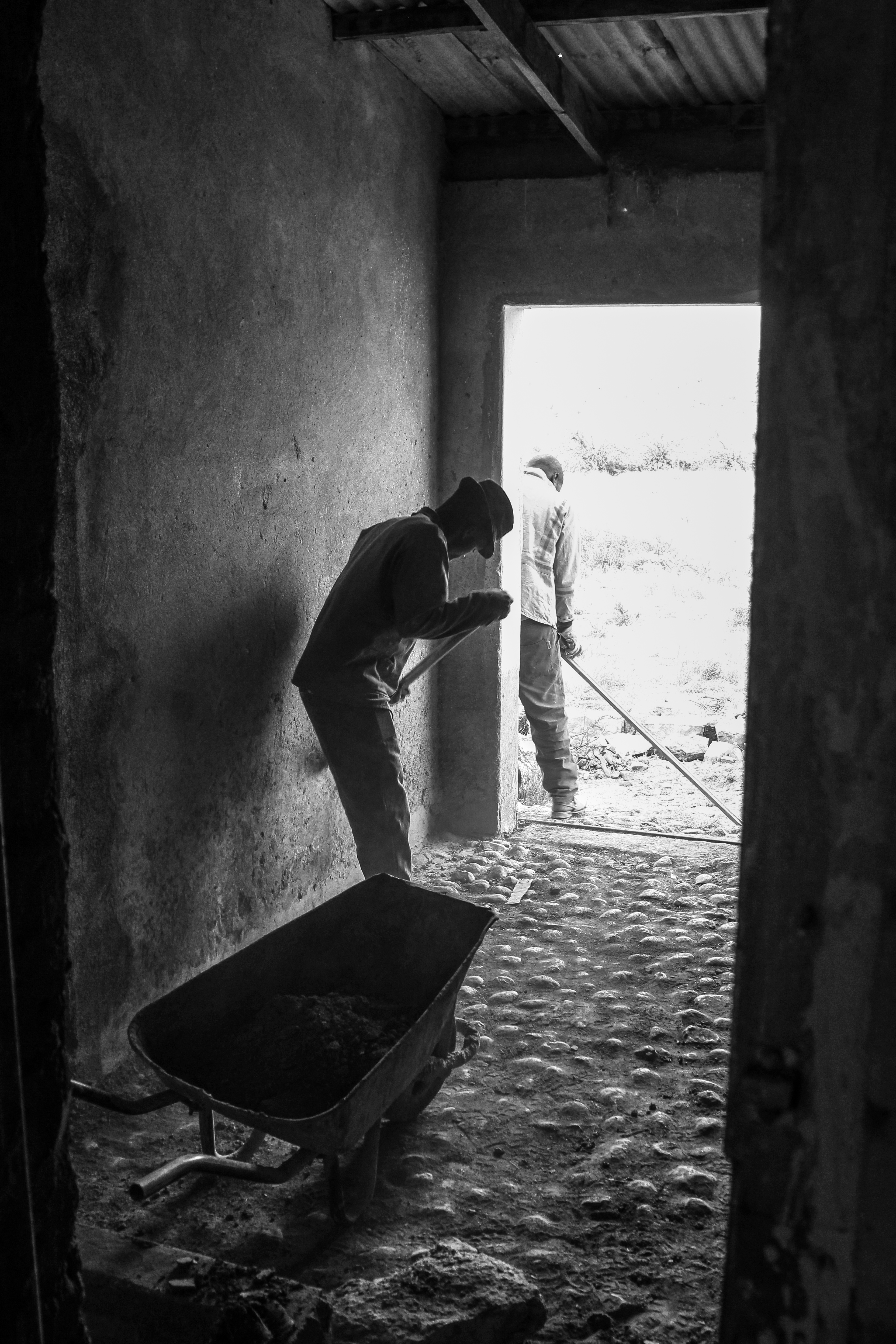
Final touches to an old shearing shed on the N1 outside Richmond, Northern Cape, on its way to being the lovely Karoo Padstal. (Photo: Chris Marais)
The financial benefits of preservation
It has been noted many times that preserving architecture and buildings in an appropriate way increases property values and lifts the financial energy in a town. So it would be interesting to calculate what effect Eira Maasdorp has had on the fortunes of Graaff-Reinet.
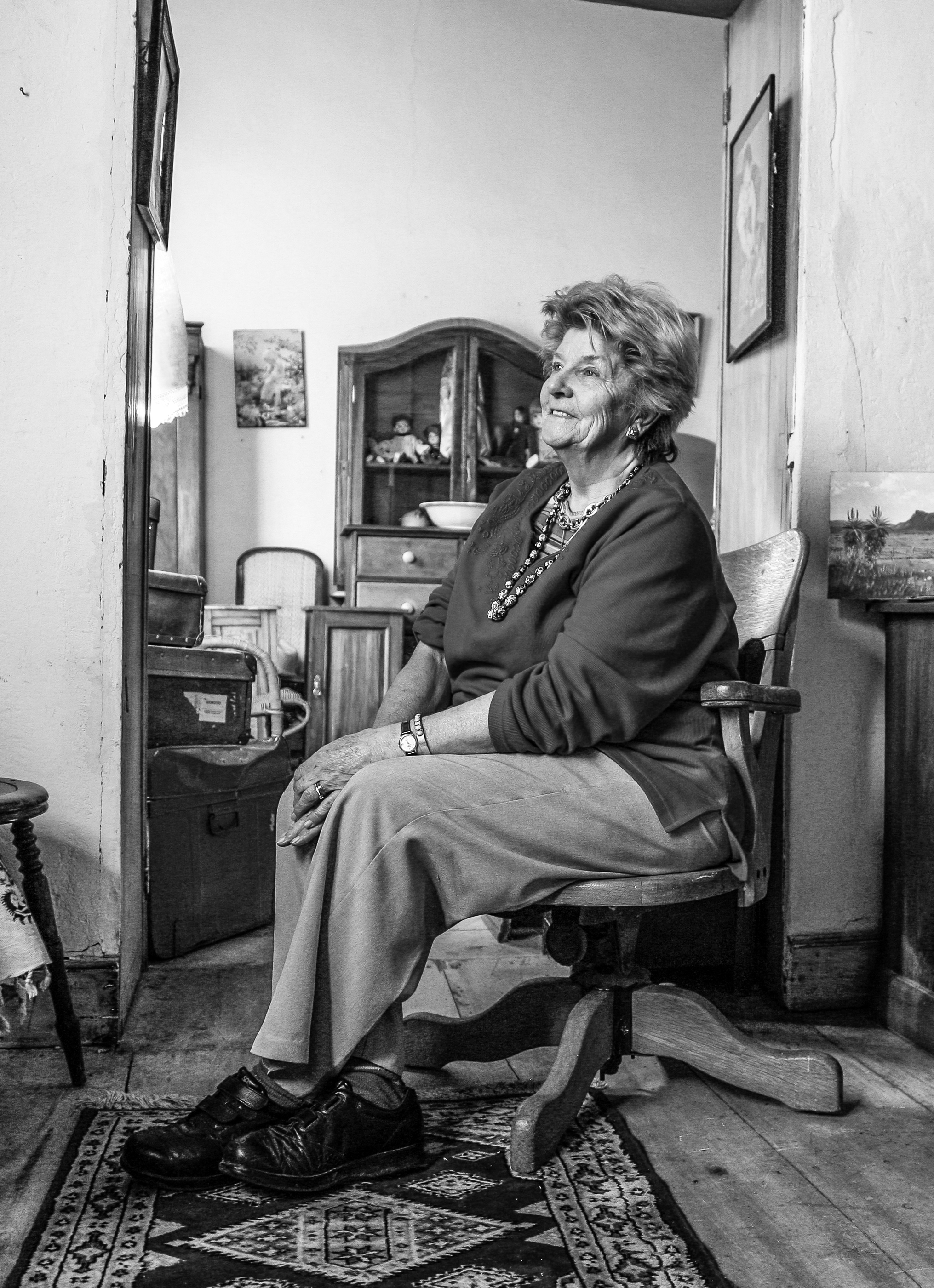
Eira Maasdorp is passionate about the architectural heritage of Graaff-Reinet. (Photo: Chris Marais)
Eira grew up in a farmhouse built in 1812. Despite the splendid old building they lived in, her family was not wealthy. Her father sheared their own sheep and her mother classed the wool.
After her marriage to Charles Maasdorp, the 1950s Wool Boom changed everything. The suddenly rich farmers often built new houses (and used the original one for extended family or storage) and got rid of their “old fashioned” yellowwood and stinkwood furniture, opting for more modern imbuia wood instead.
“I’d pick up a stinkwood chair for a guinea. Can you imagine?”
Eira couldn’t stop buying, their house filled up with Africana and eventually Charles had to peevishly protest that he didn’t want to live in a museum.
It was when Eira opened an antiques shop in town that she noticed that people were demolishing the first houses of Graaff-Reinet.
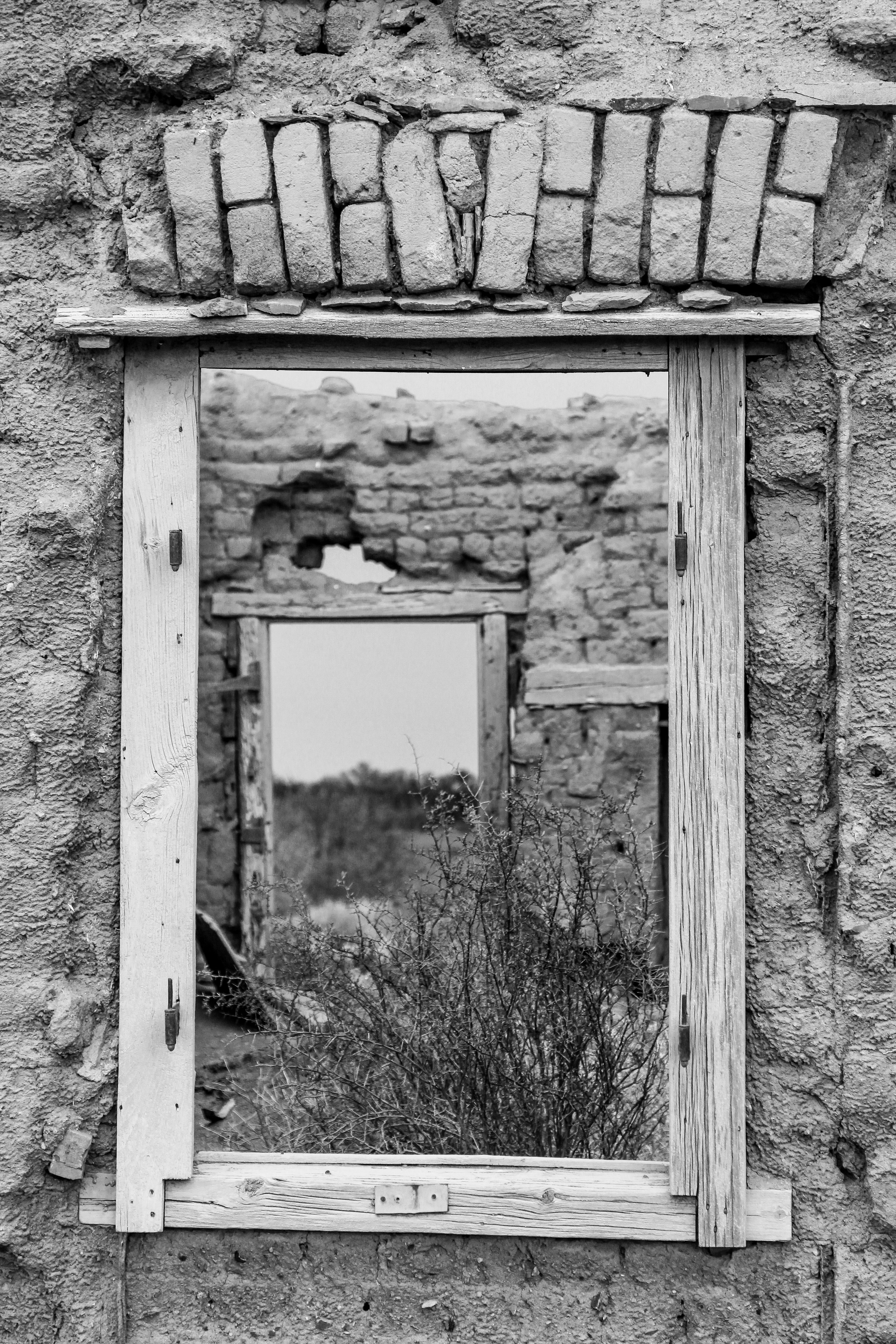
Sometimes the most ephemeral building materials last the longest – like these sun-baked bricks. (Photo: Chris Marais)
“So we created the Historical Society, to save these buildings. The locals called us the Hysterical Society, because whenever we saw anyone offloading cement and bricks in front of a heritage house, we’d descend on the owners asking all sorts of questions.”
When the municipality made plans to knock down one of the town’s first churches, Eira called businessman Anton Rupert (who also had his roots in Graaff-Reinet) in desperation. He came to the rescue of his hometown.
Eira and others started buying up houses of a certain age in parts of the town that were almost slums. Restoration has made them some of the most sought-after addresses in Graaff-Reinet today.
What sets the town apart is the sheer number of national monuments (more than 220) and the fact that entire streetscapes have been preserved. The town buzzes because preservation has attracted new blood, new industries and more children to its schools.
“We fought for every house, and made ourselves very unpopular. But today I get such satisfaction knowing that Graaff-Reinet is one of the few towns that has kept much of its architectural heritage.”
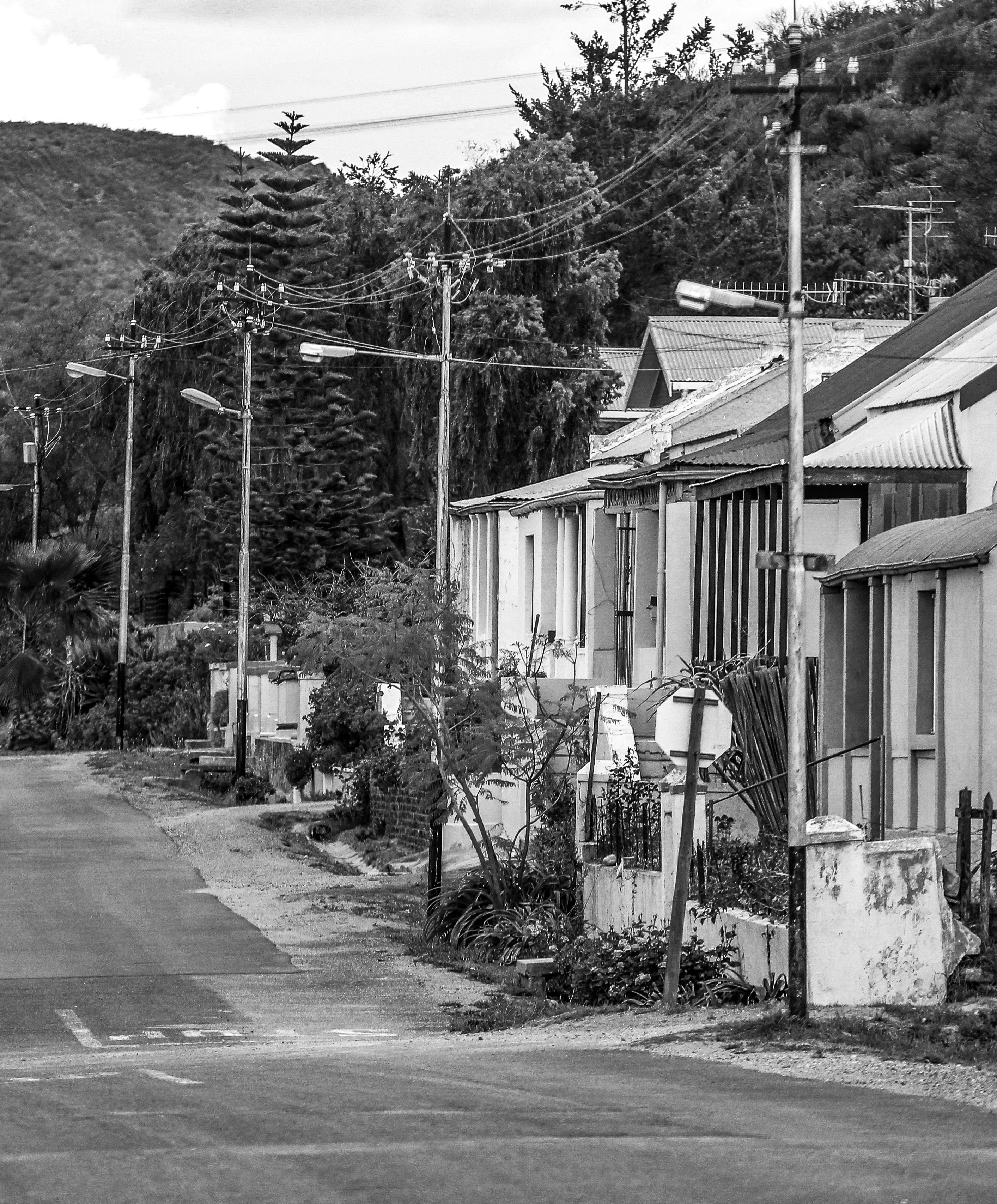
A line of neatly restored cottages in Uniondale, Western Cape. (Photo: Chris Marais)
Whitewash and horse dung
For Alta and Erwin Coetzee, originally from the Witwatersrand, restoration of Karoo houses came as a surprise fascination.
They had lived most of their lives on gold mines, where even the changing of a lightbulb was done by other people. One Sunday in the early 1990s, Erwin saw an advert in the Landbou Weekblad and showed it to Alta. Shortly after that they became the proud but apprehensive owners of a dilapidated Karoo house in the faraway Northern Cape town of Calvinia.
The restoration process was a long work of dedication, wonder, and frustration. The walls were skew and absorbed tons of paint. The contractor was drunk most of the time.
Alta, a former human resources clerk, and Erwin, a medical doctor, ended up doing almost all the very hard work themselves. There was no one in town familiar with restoration, “so we could only get other people to help once we had learnt enough to teach them”.
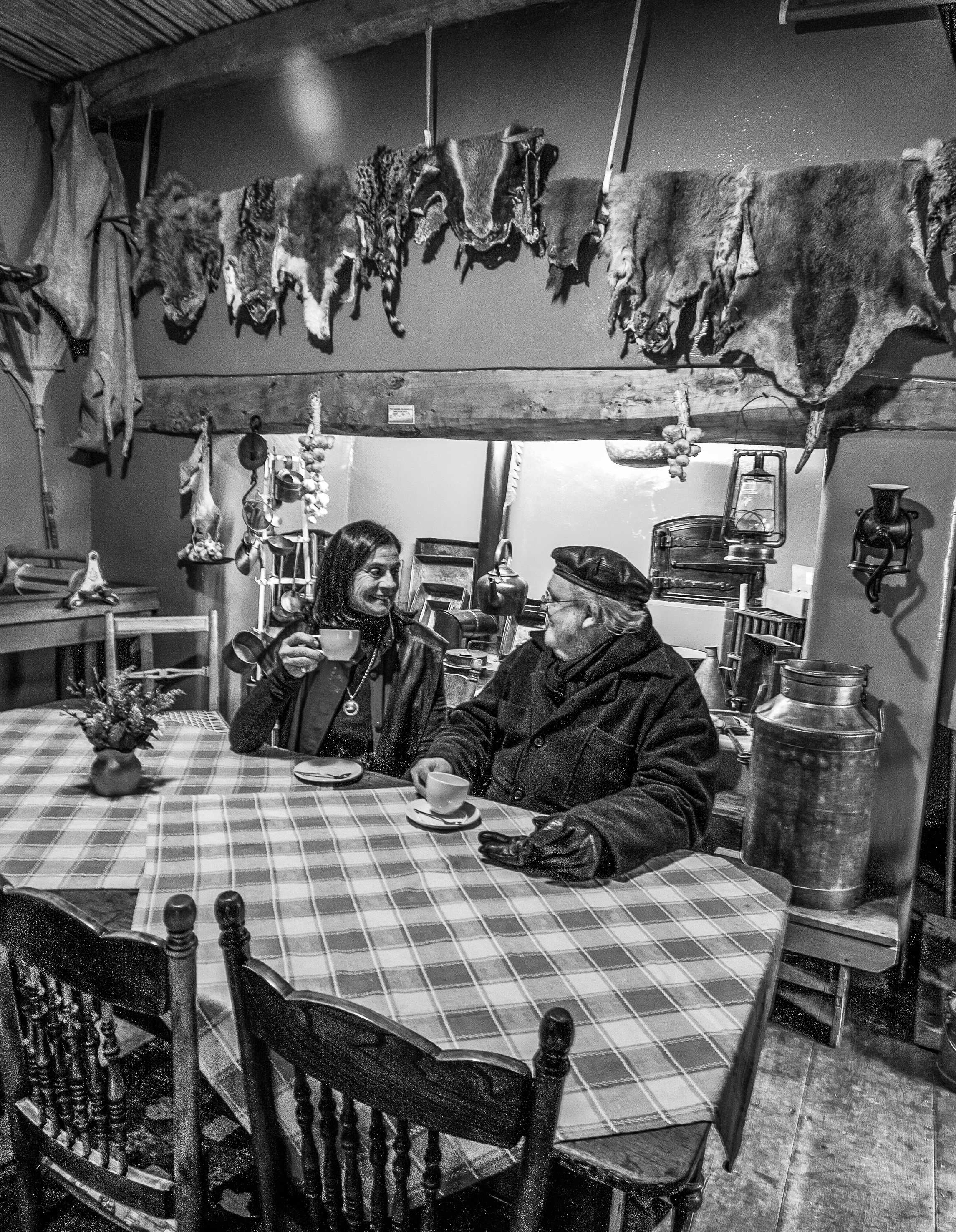
Alta and Erwin Coetzee, who brought many old houses in Calvinia, Northern Cape, back to life. (Photo: Chris Marais)
They’d bought the oldest house in Calvinia, and took great pains to keep it as authentic as possible. For the roof trusses, they cut down poplar trees, a few at a time, until they had enough. The nails were handmade, recovered from demolished houses. The floor was remade from clay, straw and horse dung. Underneath layers of whitewash, they found original murals and walls painted bizarre colours, with patterns around doors. They brought in an art student to restore them.
Author Karel Schoeman found a daguerreotype picture of the house dating back to 1860, so they had an idea of what it had once looked like.
This became the Hantam Huis, centrepiece of a series of beautifully restored accommodations where tourists can stay in Calvinia.
In short, the correct restoration of heritage buildings can increase the value of property and the fortunes of a town by attracting the attention of visitors who might end up investing or buying at some later stage.
“However,” adds Dr Coetzee, “the pleasure of restoring a place lies in doing it, and should never be measured in monetary terms.” DM
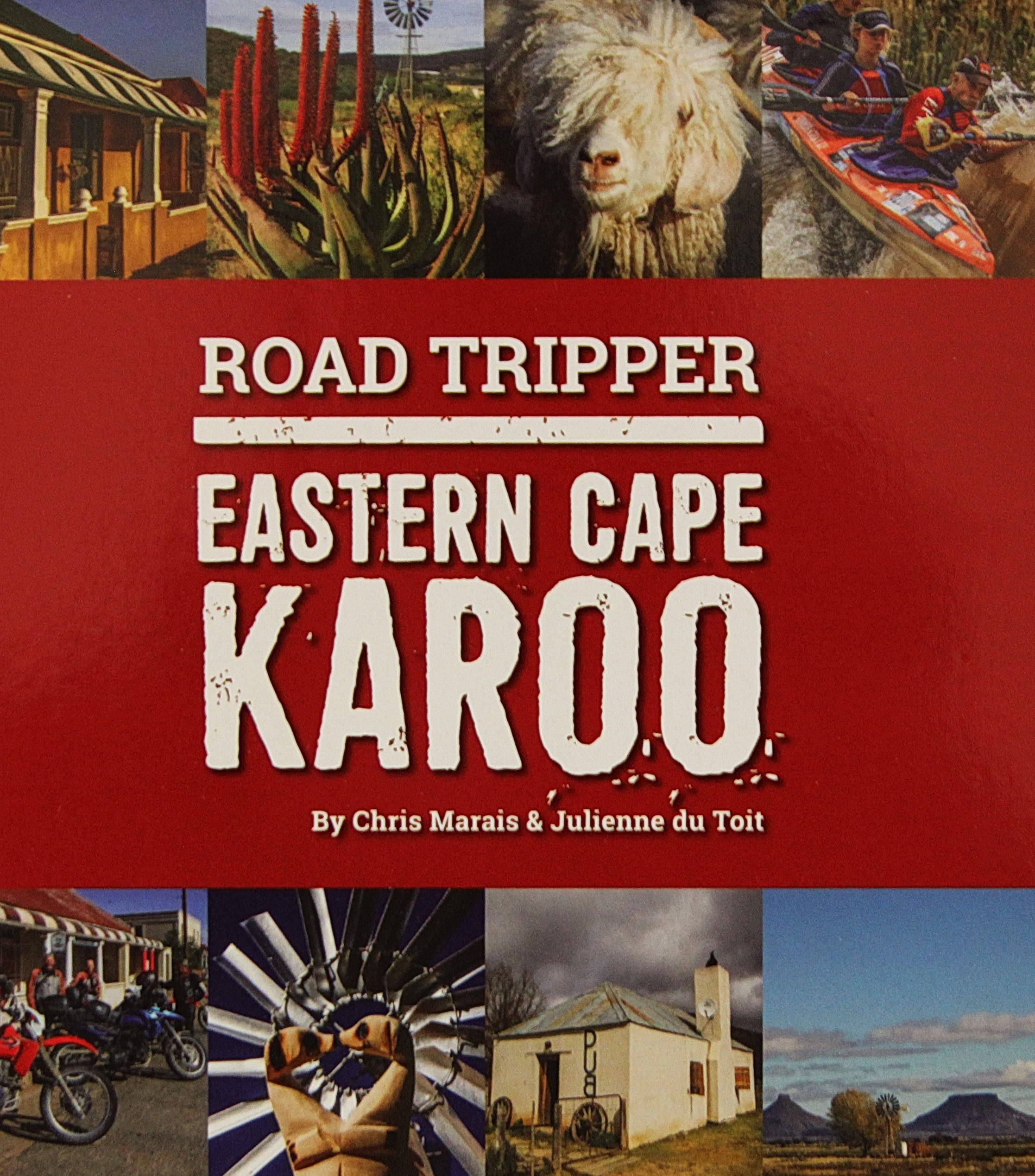
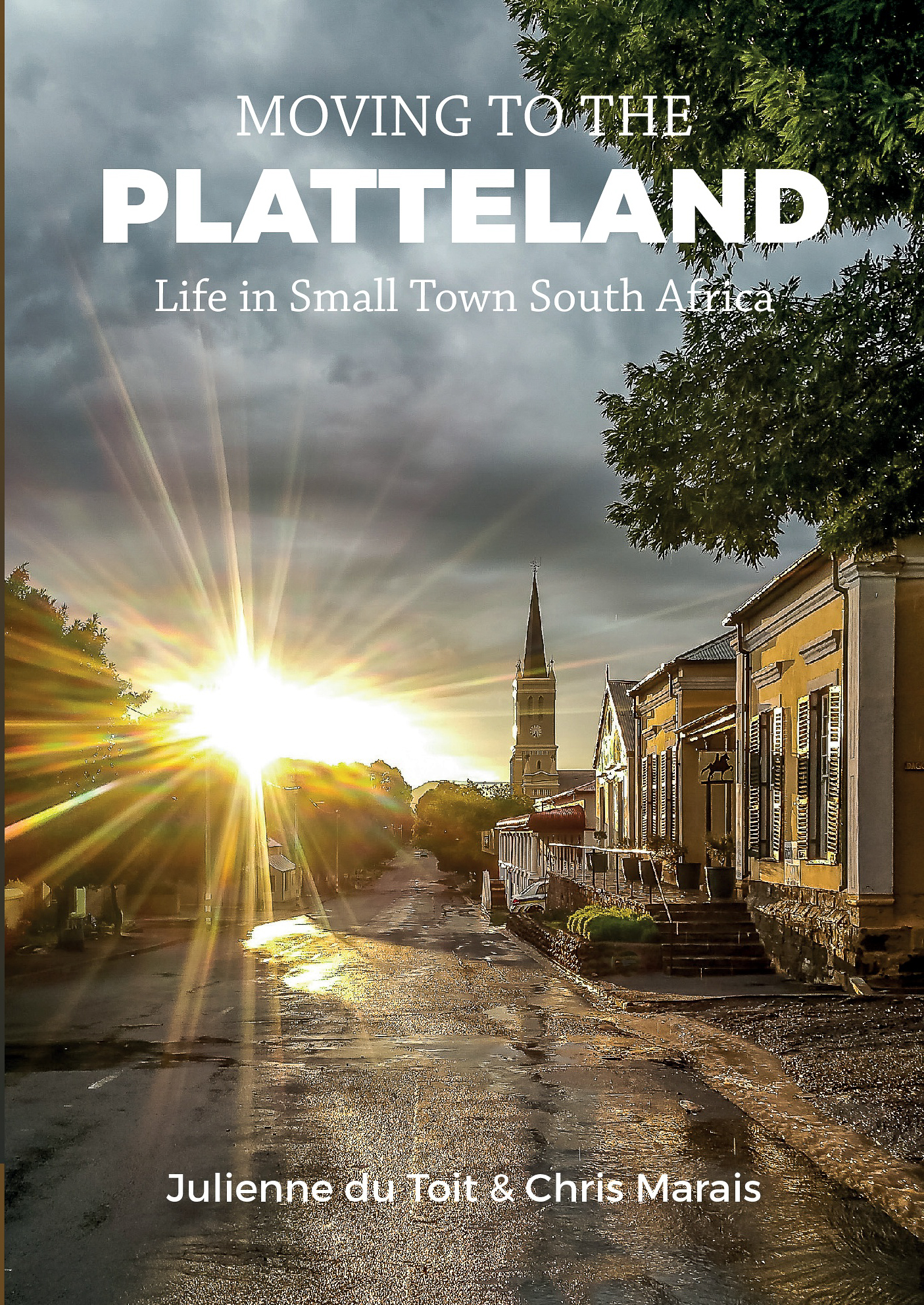
This is an excerpt from Moving to the Platteland: Life in Small Town South Africa, by Julienne du Toit and Chris Marais. The authors are offering a two-book special of Moving to the Platteland and Road Tripper: Eastern Cape Karoo at only R520, including courier costs in South Africa. For enquiries, contact [email protected].




















Wonderful tale well told
What a beautiful tale about preservation of old houses in these historical places. But the story would have been nicer with the newly gazetted names of those places like Makhanda, KwaNojoli, Nxuba.
Breaks my heart when I see broekies lace posts, shutters, wood flooring and ball and free-standing baths for sale from old houses that are being gutted and modernized into architectural grey, concrete oblivion. You bought a treasure, don’t strip the soul out of it.
THE GREAT KAROO
1. Flat topped koppies, capped with krantzes
Swartberg Mountains, winding, twisting passes
Life is quiet there, quieter than the breeze,
Older than the dongas, winding past the trees.
Chorus: Deep blue Skies, take me back to the farm
Where I grew up. In the distant Great Karoo.
Let me lie until I die.
2. All my life time full of mem’ries,
Sustain me ever as I wander all alone.
I’ts bright and sunny, under puffy clouds.
Eternal hope of rain with it’s thunder loud.
Chorus
3. Mirages in the summer heat shimmer on the far off plains.
Thorn trees long for the summer rains.
The bleating sheep as the herd passes by.
Dusty clouds soaring high, soaring high, soaring high.
Chorus
Henry Coppens